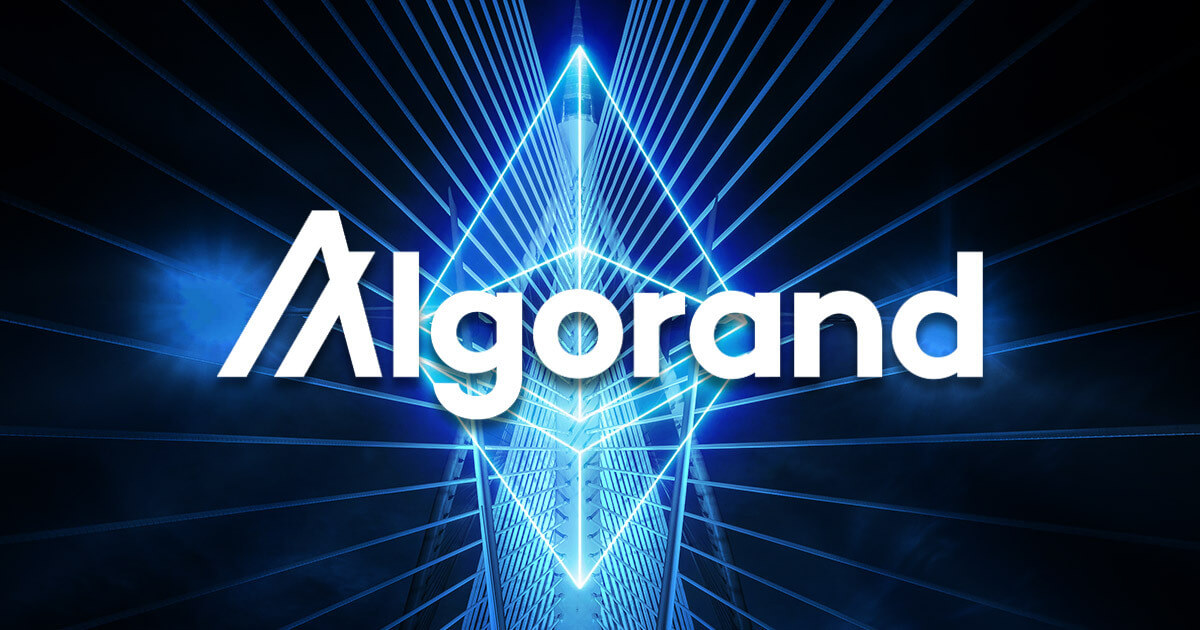Introduction
Blockchain technology has gained significant attention and recognition in recent years. Its decentralized nature and ability to provide transparent and secure transactions have made it a revolutionary concept across various industries. At the core of any blockchain system lies the concept of consensus. Consensus is the mechanism by which participants in a blockchain network agree on the validity of transactions and make decisions collectively.
Consensus is crucial in blockchain technology as it ensures the integrity and immutability of the data stored on the blockchain. It prevents malicious activities such as double-spending and tampering with the records. By achieving consensus, blockchain networks enable trust and eliminate the need for intermediaries or centralized authorities.
Different consensus algorithms are used in blockchain networks to achieve agreement and validate transactions. Each algorithm has its own unique approach and set of rules for participants to follow. Some of the well-known consensus algorithms include Proof of Work (PoW), Proof of Stake (PoS), Delegated Proof of Stake (DPoS), and Practical Byzantine Fault Tolerance (PBFT).
In this article, we will explore the concept of consensus in blockchain technology, its importance, and various consensus algorithms used in different blockchain networks. By understanding the underlying mechanisms of consensus, you will gain a deeper insight into how blockchain technology operates and how it ensures the security and reliability of transactions.
What Is Consensus in Blockchain Technology
Consensus in blockchain technology refers to the process by which participants in a decentralized network agree on the validity of transactions and reach a common decision regarding the state of the distributed ledger. It is the foundation that ensures all nodes in the network have a harmonious view of the blockchain’s history and current state.
Achieving consensus is crucial in blockchain because it allows for trust and reliability without the need for a central authority. In traditional centralized systems, such as banks, a central authority is responsible for verifying and validating transactions. However, in a decentralized blockchain network, there is no central authority. Instead, consensus algorithms are employed to enable agreement among network participants.
Consensus algorithms determine the process by which nodes within a blockchain network confirm the validity of transactions and agree on the order in which they are added to the blockchain. These algorithms ensure that no single entity can manipulate the data or make fraudulent transactions. Consensus is achieved through a combination of cryptographic techniques, game theory, and economic incentives, depending on the specific algorithm used.
The consensus mechanism varies depending on the blockchain platform and its desired characteristics. Some popular consensus algorithms include Proof of Work (PoW), Proof of Stake (PoS), Delegated Proof of Stake (DPoS), and Practical Byzantine Fault Tolerance (PBFT). Each algorithm has its own benefits, drawbacks, and requirements.
Overall, consensus in blockchain is a critical element that enables the trust and integrity of the network. It ensures that all nodes in the network are in agreement and that the blockchain remains secure and tamper-proof. By achieving consensus, blockchain technology has the potential to revolutionize industries by providing a more transparent, efficient, and decentralized way of conducting transactions and managing databases.
Why Is Consensus Important in Blockchain
Consensus is of utmost importance in blockchain technology for several reasons. First and foremost, consensus ensures the security and integrity of the distributed ledger. In a blockchain network, every transaction is recorded and stored in a transparent and immutable manner. For this reason, it is crucial that all participants in the network agree on the validity of these transactions. By achieving consensus, blockchain networks prevent fraudulent activities, such as double-spending and tampering with the data.
Furthermore, consensus enables trust and removes the need for intermediaries. In traditional centralized systems, trust is established through third-party institutions or authorities that verify and authenticate transactions. However, in a decentralized blockchain network, consensus algorithms replace the need for intermediaries by allowing all participants to collectively validate and agree on transactions. This decentralized trust is one of the key advantages of blockchain technology.
Consensus also plays a role in the overall efficiency and scalability of blockchain networks. By achieving agreement on the state of the blockchain, the network avoids conflicts and reconciliations, thus streamlining the process. Additionally, consensus algorithms enable scalability by allowing the network to handle a large number of transactions without compromising security. The consensus protocol ensures that the blockchain remains secure and robust even as the network grows in size and transaction volume.
Moreover, consensus algorithms provide governance mechanisms for blockchain networks. They determine who has the authority to validate transactions, create new blocks, and participate in the decision-making process. This ensures a fair and transparent system where all participants have equal opportunities to contribute to the network. Consensus algorithms may also incorporate economic incentives, rewarding participants who actively contribute to the network’s security and stability.
In summary, consensus is crucial in blockchain technology as it ensures the security, integrity, and trustworthiness of the network. By achieving agreement on the validity of transactions, consensus algorithms enable decentralized trust and eliminate the need for intermediaries. Consensus also contributes to the overall efficiency, scalability, and governance of blockchain networks. Understanding the importance of consensus is key to comprehending the fundamental principles and benefits of blockchain technology.
Different Consensus Algorithms
In blockchain technology, various consensus algorithms are used to achieve agreement among network participants. Each algorithm employs a unique approach to validate transactions and reach a consensus on the state of the blockchain. Let’s explore some of the well-known consensus algorithms and their characteristics.
Proof of Work (PoW): PoW is the consensus mechanism used by the Bitcoin blockchain. In this algorithm, participants, known as miners, compete to solve complex mathematical puzzles. The miner who successfully solves the puzzle first gets the right to add the next block to the blockchain. This process requires significant computational power, making it secure but energy-intensive.
Proof of Stake (PoS): PoS is an alternative consensus algorithm that works differently from PoW. Instead of relying on computational power, PoS assigns block validation rights based on the stake held by participants in the network. The stake can be in the form of cryptocurrency units. Validators are chosen randomly, usually proportionate to their stake, to validate transactions and create new blocks. PoS is known for its energy efficiency but raises concerns regarding centralization.
Delegated Proof of Stake (DPoS): DPoS is a consensus algorithm that introduces a voting and delegation system to select validators. Token holders in the network elect a limited number of trusted delegates who are responsible for validating transactions. By delegating the validation process, DPoS achieves fast transaction confirmation times and high scalability. However, it is criticized for potentially centralizing power in the hands of a few delegates.
Practical Byzantine Fault Tolerance (PBFT): PBFT is a consensus algorithm suitable for permissioned blockchains where participants are known and trusted. It relies on a leader-based system and ensures that all honest participants agree on the order of transactions. PBFT requires a majority of participants to be honest, making it tolerant to a certain number of Byzantine faults. It offers high transaction throughput, but it is less suitable for large, decentralized networks.
Other consensus mechanisms also exist, including Proof of Authority (PoA), Practical Byzantine Fault Tolerance (pBFT), and Directed Acyclic Graph (DAG) algorithms such as Hashgraph and IOTA’s Tangle. Each consensus algorithm has its strengths, weaknesses, and use cases, and the choice of algorithm depends on the specific requirements and goals of the blockchain network.
Understanding the different consensus algorithms is crucial for comprehending the inner workings of blockchain networks. These algorithms play a vital role in ensuring security, scalability, and decentralization while enabling efficient and trustworthy transactions. By adapting the appropriate consensus mechanism, blockchain networks can provide innovative solutions across various industries, paving the way for a decentralized future.
Proof of Work (PoW)
Proof of Work (PoW) is a consensus algorithm widely used in blockchain networks, most notably in the original implementation of Bitcoin. In PoW, participants, known as miners, compete to solve complex mathematical puzzles in order to validate transactions and add new blocks to the blockchain. This process requires significant computational power and energy consumption.
In the PoW algorithm, miners have to find a nonce, a random number, that, when combined with the data of the block being mined, produces a hash value that meets certain criteria. The criteria usually require the hash value to have a specific number of leading zeros. The difficulty of finding the nonce is adjusted dynamically to maintain a consistent block generation rate.
Once a miner finds a valid nonce, they broadcast the solution to the network. Other miners then verify the solution and, if it is correct, they accept it and start working on solving the next block. In return for their computational efforts, the successful miner is rewarded with a certain amount of cryptocurrency.
The PoW algorithm provides several benefits to blockchain networks. Firstly, it ensures that malicious actors would need a massive amount of computational power to alter the blockchain’s history, making the network highly secure against attacks. Secondly, the PoW mechanism acts as a fair distribution method for newly minted cryptocurrency, as miners are rewarded based on their computational contribution. This incentivizes miners to continue securing the network.
However, there are some challenges associated with PoW. The energy consumption required by the algorithm has drawn criticism due to its environmental impact. Additionally, the high computational requirements make PoW networks slower and less scalable compared to other consensus algorithms. As a result, alternative consensus mechanisms, such as Proof of Stake (PoS) and Delegated Proof of Stake (DPoS), have been developed to address these concerns.
Overall, Proof of Work is a widely adopted consensus algorithm that has played a significant role in the success of blockchain technology. Its security guarantees and fair reward distribution system have solidified its place as the foundation of many blockchain networks. However, the increasing concerns over energy consumption and scalability have led to the exploration and adoption of alternative consensus mechanisms in recent years.
Proof of Stake (PoS)
Proof of Stake (PoS) is a consensus algorithm used in blockchain networks as an alternative to Proof of Work (PoW). In the PoS algorithm, validators are chosen to create new blocks and validate transactions based on the amount of cryptocurrency they hold and “stake” in the network. This means that the more cryptocurrency a participant holds, the higher their chances of being selected as a validator.
Under PoS, the selection of validators is typically done in a pseudo-random manner, proportional to their stake. Validators are responsible for creating and validating blocks, and their commitment to the network is backed by their financial investment in the form of staked cryptocurrency. In the case of malicious behavior, such as double-spending or attempting to alter the blockchain, validators risk losing their staked funds as a penalty.
By eliminating the need for solving complex mathematical puzzles and the associated energy consumption, PoS achieves higher energy efficiency compared to PoW. PoS also enables faster block confirmation times, allowing for greater scalability. This makes PoS a suitable consensus algorithm for networks aiming to process a large number of transactions quickly.
One of the challenges with PoS is the potential for centralization. In systems where wealth accumulates over time and holders with more cryptocurrency have a higher probability of being selected as validators, there is a risk that a small number of participants will control the majority of the validation process. Various mechanisms, such as coin age-based selection or additional factors like reputation or online uptime, have been proposed to mitigate this issue.
To incentivize active participation and discourage malicious behavior, PoS networks often implement economic mechanisms. Block rewards are typically distributed to validators based on their stake, providing an incentive to hold and validate transactions. Additionally, some PoS networks include mechanisms for slashing, where validators can lose a portion of their staked funds for violating network rules or engaging in malicious activities.
Proof of Stake has gained significant popularity and implementation in various blockchain projects. Ethereum, for example, is planning to transition from PoW to PoS with its Ethereum 2.0 upgrade. The move to PoS aims to increase network scalability, reduce energy consumption, and improve the overall efficiency of the Ethereum blockchain.
Overall, Proof of Stake is a consensus algorithm that offers energy efficiency, scalability, and a fair distribution of block validation rights based on participants’ stake in the network. While it presents its own challenges, the adoption of PoS in blockchain networks shows promise in addressing the limitations of PoW and forming a more sustainable and efficient blockchain ecosystem.
Delegated Proof of Stake (DPoS)
Delegated Proof of Stake (DPoS) is a consensus algorithm used in some blockchain networks as an alternative to traditional Proof of Work (PoW) and Proof of Stake (PoS) algorithms. DPoS combines the advantages of decentralization and efficiency by introducing a voting and delegation system to select validators in the network.
In a DPoS system, token holders in the network have the power to elect a limited number of trusted delegates to validate transactions and create new blocks. These delegates, often referred to as “witnesses” or “block producers,” take turns creating blocks and maintaining the blockchain. The specific number of delegates and their selection process can vary depending on the DPoS implementation.
The voting and delegation mechanism in DPoS provides several benefits. It allows token holders to actively participate in the governance of the blockchain network by choosing delegates they believe will act in the network’s best interest. This democratic approach ensures that decision-making power is distributed among network participants rather than concentrated in the hands of a few validators.
By limiting the number of validators, DPoS achieves faster transaction confirmation times and higher scalability compared to other consensus algorithms. This makes DPoS well-suited for blockchain networks that require high throughput and low latency, such as those used in decentralized applications or financial systems.
However, DPoS also has its challenges. One concern is the potential for centralization due to the limited number of validators. If a small group of delegates controls a significant portion of the network’s voting power, they could potentially collude and manipulate the blockchain. To address this, DPoS implementations often include mechanisms to prevent concentration of power, such as term limits for delegates or mechanisms to encourage rotation of validators.
Another aspect of DPoS is the economic incentives provided to token holders and delegates. Delegates often receive rewards for their validation and block production efforts, which incentivizes them to maintain the network’s security and stability. Token holders also have the opportunity to earn rewards by participating in the voting process and choosing delegates who contribute positively to the network.
DPoS has been employed in various blockchain networks, including Steem, BitShares, and EOS. These networks have leveraged the benefits of DPoS to achieve fast transaction speeds and decentralized governance. However, the adoption of DPoS is not without debate, with critics expressing concerns about centralization and potential manipulation of the voting process.
In summary, Delegated Proof of Stake (DPoS) is a consensus algorithm that combines delegation, voting, and block production to achieve speed, scalability, and decentralized decision-making. While it presents certain challenges, DPoS has showcased its potential in blockchain networks, offering an efficient and democratic approach to consensus. Future iterations and enhancements of DPoS may further address the concerns and limitations associated with this consensus algorithm.
Practical Byzantine Fault Tolerance (PBFT)
Practical Byzantine Fault Tolerance (PBFT) is a consensus algorithm designed for blockchain networks where participants are known and trusted, often referred to as permissioned blockchains. PBFT aims to achieve consensus in the presence of faulty or malicious nodes in the network, known as Byzantine faults, while ensuring high transaction throughput and low latency.
In PBFT, the consensus process is divided into rounds. Each round consists of several stages, including a pre-prepare, prepare, and commit phase. During the pre-prepare phase, the proposed block is broadcasted by the primary node to the other participants in the network. These participants then validate the proposed block and broadcast their agreement by sending a prepare message. Once a sufficient number of prepare messages are received, the participants enter the commit phase, where they send commit messages to finalize the decision on the proposed block.
To achieve fault tolerance, PBFT employs a redundancy mechanism. The algorithm requires a two-thirds majority of participants to be honest and agree on the proposed block for it to be added to the blockchain. This means that PBFT can tolerate up to one-third of participants behaving maliciously or experiencing failures without compromising the integrity of the consensus.
One of the key advantages of PBFT is its high transaction throughput. Unlike Proof of Work (PoW) or Proof of Stake (PoS) algorithms that require extensive computational effort, PBFT offers fast transaction confirmation times and scalability, making it suitable for applications that require near real-time processing of transactions.
However, PBFT has some limitations that make it more suitable for smaller, permissioned networks. The algorithm requires participants to be known and trusted, which can be challenging to achieve in open, public blockchain networks. Additionally, PBFT can be vulnerable to distributed denial-of-service (DDoS) attacks when a large number of malicious nodes attempt to overwhelm the network.
Despite its limitations, PBFT has been successfully implemented in various permissioned blockchain projects. Its use cases range from financial systems to supply chain management and government applications, where the requirement for known participants and high transaction throughput aligns with the network’s objectives.
In summary, Practical Byzantine Fault Tolerance (PBFT) is a consensus algorithm designed for permissioned blockchain networks. By dividing the consensus process into rounds and requiring a two-thirds majority of honest participants, PBFT achieves fault tolerance and high transaction throughput. While it has limitations that restrict its applicability to certain types of networks, PBFT has proven to be an effective consensus mechanism for permissioned blockchain applications requiring known participants and fast transaction processing.
Other Consensus Mechanisms
In addition to the well-known consensus algorithms like Proof of Work (PoW), Proof of Stake (PoS), Delegated Proof of Stake (DPoS), and Practical Byzantine Fault Tolerance (PBFT), there are several other consensus mechanisms that have been developed and implemented in various blockchain networks. These mechanisms offer different approaches to achieve agreement and validation in decentralized networks. Let’s explore some of these consensus mechanisms:
Proof of Authority (PoA): PoA is a consensus mechanism where block validators are chosen based on their reputation or identity. It focuses on the identity of validators rather than the amount of cryptocurrency they hold or their computational power. PoA is commonly used in permissioned blockchain networks, as it allows for quick block confirmation times and efficient transaction processing.
Practical Byzantine Fault Tolerance (pBFT): Similar to PBFT, pBFT is a consensus mechanism designed for permissioned blockchain networks. It involves a leader-based system where participants take turns as leaders, and consensus is reached through a series of communication rounds. pBFT is known for its fast block confirmation times and high throughput while ensuring fault tolerance.
Directed Acyclic Graph (DAG): DAG-based consensus mechanisms, such as Hashgraph and IOTA’s Tangle, have gained popularity in recent years. Instead of using traditional blockchain structures, these mechanisms utilize a directed acyclic graph to validate transactions. DAG-based consensus allows for asynchronous transaction confirmation, high scalability, and low transaction fees.
Proof of Elapsed Time (PoET): PoET is a consensus mechanism developed by Intel. It is designed to be energy-efficient by limiting the power consumption of the blockchain network. In PoET, participants perform a lottery process that determines a randomly assigned block leader who can add the next block to the blockchain. This mechanism is based on trusted execution environments and secure hardware.
Each consensus mechanism has its strengths, weaknesses, and use cases. The choice of a specific consensus mechanism depends on the goals and requirements of the blockchain network. Factors such as security, decentralization, scalability, energy efficiency, and the size of the network play important roles in selecting the most suitable consensus mechanism.
Blockchain technology continues to evolve, and consensus mechanisms are continuously being researched and developed. The exploration of new consensus mechanisms is driven by the need to improve scalability, energy efficiency, and security while catering to various decentralized network requirements. These innovative consensus mechanisms have the potential to shape the future of blockchain technology and its applications across different industries.
Conclusion
Consensus is a fundamental concept in blockchain technology that ensures the integrity, security, and trustworthiness of transactions in a decentralized network. By achieving agreement among network participants, consensus algorithms enable transparent and reliable transaction validation, eliminating the need for intermediaries. Through different consensus mechanisms such as Proof of Work (PoW), Proof of Stake (PoS), Delegated Proof of Stake (DPoS), Practical Byzantine Fault Tolerance (PBFT), and more, blockchain networks can achieve consensus in various ways, considering factors like security, energy efficiency, scalability, and governance.
Proof of Work, the algorithm behind Bitcoin, utilizes computational power to validate transactions and secure the network, although it is known for its high energy consumption. Proof of Stake, on the other hand, selects validators based on their stake in the network, offering energy efficiency and scalability benefits, but raising concerns about centralization. Delegated Proof of Stake combines voting and delegation to achieve fast transaction confirmations and governance in a network, but it requires trust in elected delegates. Practical Byzantine Fault Tolerance is suitable for permissioned blockchains, offering fast transaction speeds and high fault tolerance.
Additionally, there are other consensus mechanisms like Proof of Authority (PoA), Practical Byzantine Fault Tolerance (pBFT), and Directed Acyclic Graph (DAG) algorithms such as Hashgraph and IOTA’s Tangle, each offering unique approaches and strengths.
As blockchain technology continues to advance, research and development around consensus mechanisms are ongoing. These innovations aim to address existing limitations, enhance scalability, increase energy efficiency, and empower decentralized networks. The choice of the most suitable consensus mechanism depends on the specific needs and objectives of the blockchain network, whether it is a permissionless or permissioned environment, and the desired trade-offs between security, decentralization, scalability, and energy efficiency.
Understanding the different consensus algorithms and their implications is vital for anyone seeking to comprehend and participate in the blockchain ecosystem. By grasping the concept of consensus, one can appreciate the transformative potential of blockchain technology across industries and envision a future where decentralized and secure transactions become the norm.

























